James M. Dickey, PLS, has been in the profession for more than 25 years, and has been a Principal at Cinquini & Passarino, Inc. (CPI) land surveying for much of that time. “I’ve come across many problems that didn’t have good solutions,” he says. “So, I’ve often had to come up with my own tools to get a job done.”
For example, Dickey was the first U.S. surveyor to make use of the Amberg Technologies three-wheel survey trolley, which he adapted to quickly survey and assess 70 miles of out-of-service Northwestern Pacific railway to be rapidly incorporated into the Sonoma-Marin Area Rail Transit (SMART) system. (American Surveyor, SMART Surveying 04.10.2010). “That trolley saved us months of fieldwork,” says Dickey, “And we gathered more accurate data.”
More recently, Dickey adapted level rods to more precisely survey along tunnel walls and the Trimble GEDO Trolly to measure a rocket sled track at Kirtland Air Force Base, New Mexico… which maybe qualifies him as a rocket scientist?
His current venture in land survey innovation is at first glance less exciting but seems likely to have a more significant impact on photogrammetric and LiDAR surveys globally.
Better Targets, Better (and More Profitable) Surveys
“A big part of our business is aerial surveys, and a big part of aerial surveys is setting targets. It’s been very frustrating to me for years that there isn’t a good solution available for this very basic task. We tried making our own plastic or Tyvek targets—we’d cut strips and lay out ‘Xs,’ but that’s a pain and sometimes the contrast with the ground wasn’t good.”
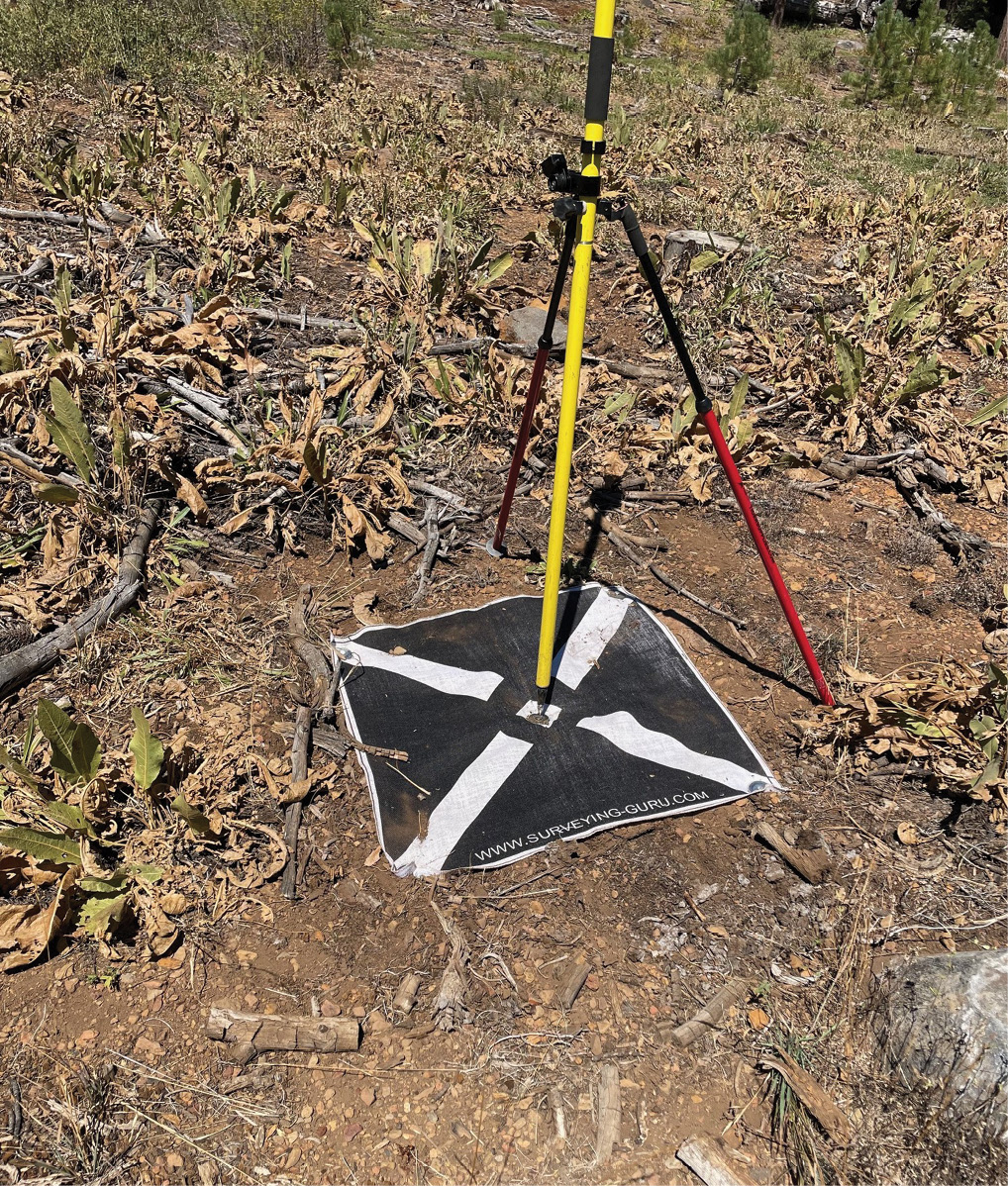
Jim Dickey’s Eco Panels have been extensively field tested.
Pre-printed plastic panels are available, but they’re not exactly cheap. Worse, anything plastic becomes problematic after flights. “You can’t just leave them out there, they break down into plastic trash and then we’re polluting some beautiful area. And most clients feel the same way. We send guys out to pick up panels, and since aerial surveys are usually of large, remote areas, just removing targets could take all day, and that amount of crew time adds up.”
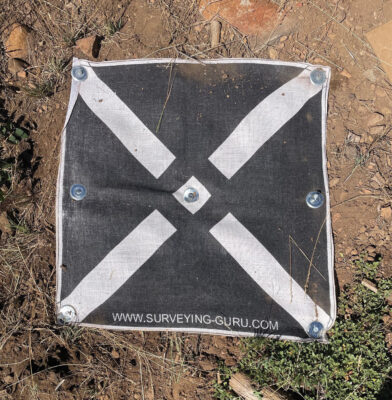
By using soy and carbon based ink with bleached jute, Eco Panels provide good serial registration marks in a biodegradeable form.
Dickey went looking for targets that were: cost-effective, non-polluting and didn’t necessarily require picking up after project completion. The panel he developed meets all these criteria and may possibly make aerial surveying less polluting and more profitable for land surveyors everywhere.
He Jutes, He Scores
The way to make the perfect aerial survey panel, it turns out, is to use perfect materials, in this case bleached jute for the actual panel and black paint (and only black paint) for the marking.
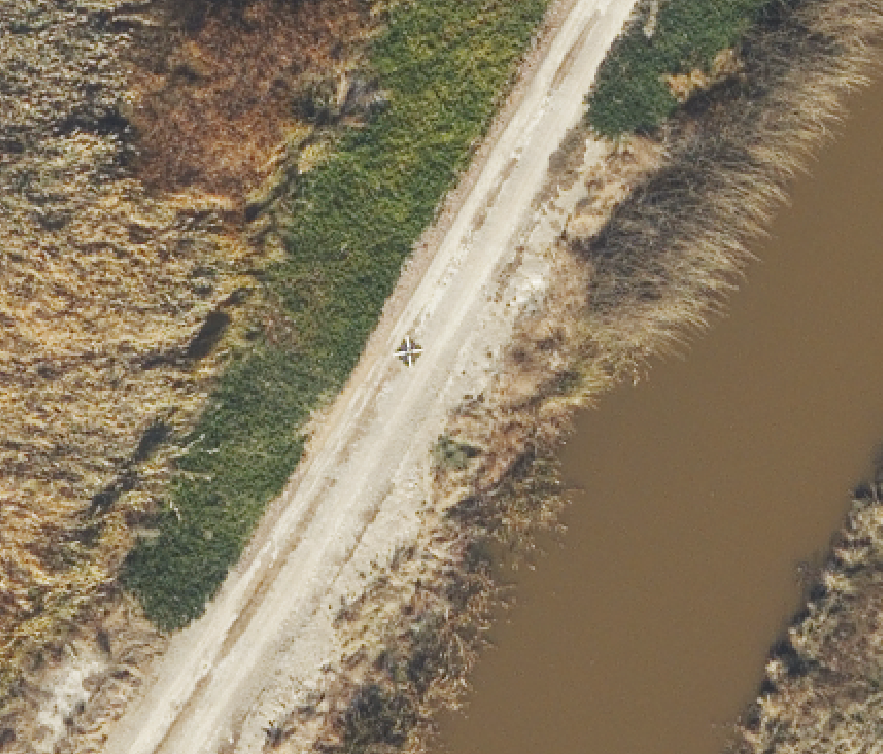
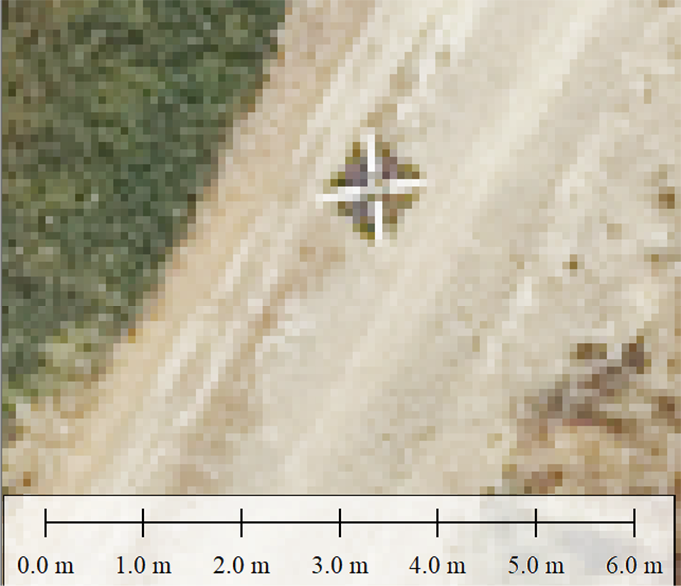
Black ink on bleached jute provides good registration at most scales.
Jute is a fiber made from plants like kenaf, hemp, flax, and ramie, commonly used for sacking of bulk materials like grain or beans. “I tried cotton, like fabric from lightweight cotton shirt,” says Dickey. “But the weave was too tight, and plants or grass wouldn’t easily grow through that. The jute has a wider weave,—it has little holes like burlap—so if jute panels are left in place they won’t block plant growth. Plus, jute itself is much cleaner to cultivate, compared to cotton—the fiber plants used don’t even require fertilizer.”
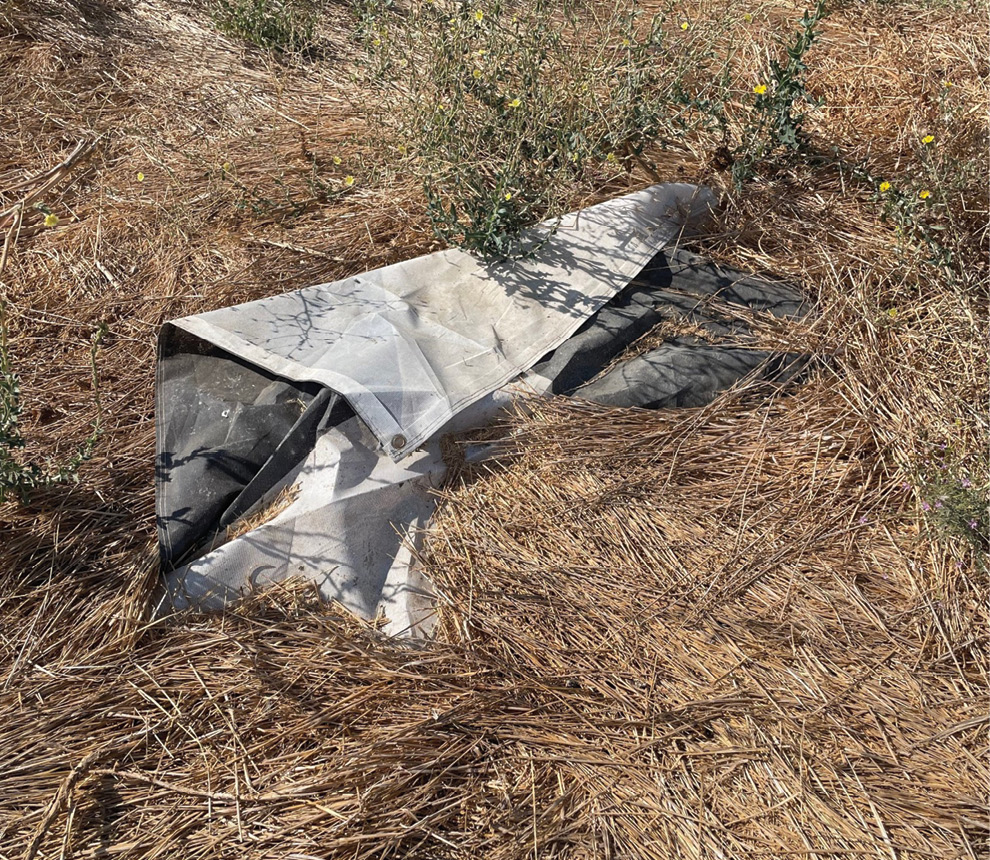
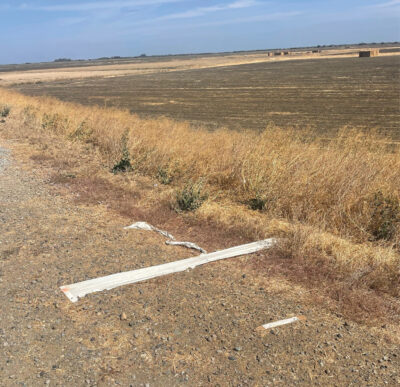
If left in place after flights, plastic panels degrade into unsightly trash.
With the panel material established, decisions about the marking ink or dye needed to be made. After all, the prime reason for a panel is to provide a clear ‘X’ for a registration mark. “I wanted to use a natural ink that was not a pollutant. Soy-based ink was the way to go; soy is the carrier for the ink when it’s being applied. Soy is natural, but some coloring agents, notably for white ink, contain microplastics and that would be polluting.”
The coloring agent in black ink, though, is carbon—the building block of life. By using only black ink to create registration marks, and using bleached jute to achieve excellent contrast, Dickey has brought to market a completely biodegradable aerial panel that provides excellent registration for photogrammetric and LiDAR surveys. They do not pollute or become trash if left in place, and the panels are durable and easy to install.
The “Eco Panels” have been extensively field tested, by Dickey and colleagues; “I’ve used about 200 of them myself, on my own projects. On one of these, a wetland survey for an agency, the project manager came to me and insisted that we pull eight of our targets set remotely along the San Francisco Bay.” That would have been a big deal, but when Dickey explained the jute and carbon construction of his panels, the PM withdrew all objections… thus saving about a day’s labor.
Good figures are hard to come by, but it’s safe to say that at least hundreds of thousands of aerial panels are installed annually, just in North America. By developing a sustainable option that saves money, Dickey may have permanently remade this surveying niche for the better.
https://www.surveying-guru.com/
Angus Stocking is a former licensed land surveyor who has been writing about infrastructure since 2002.